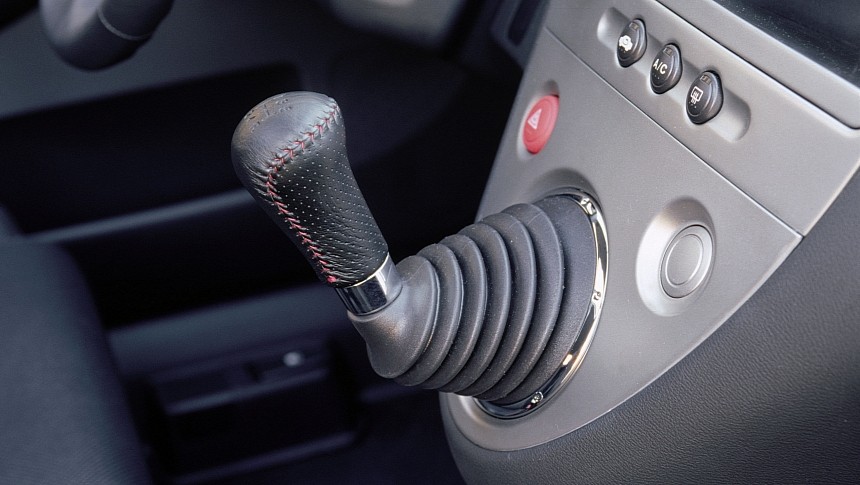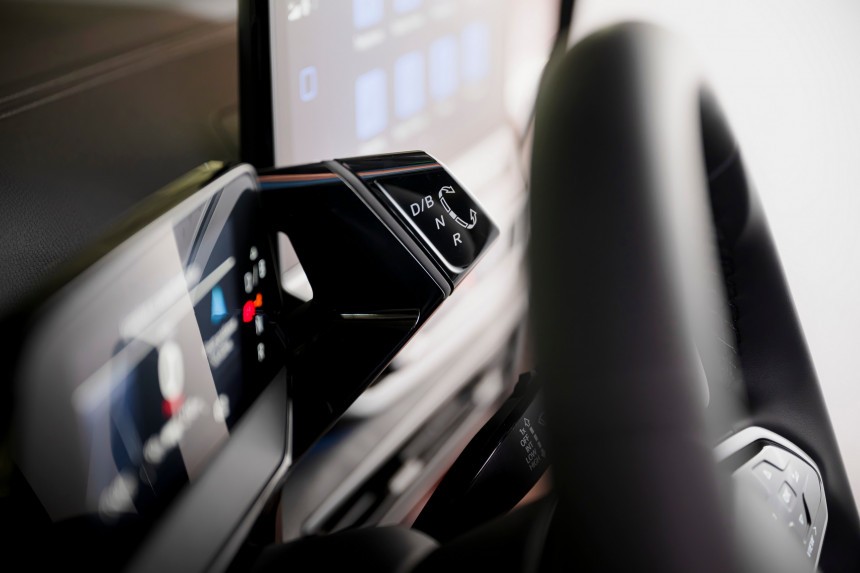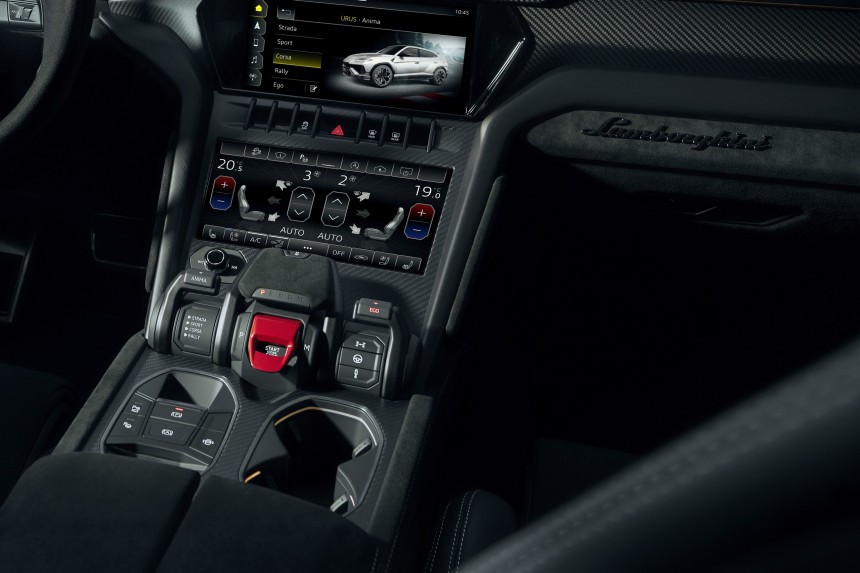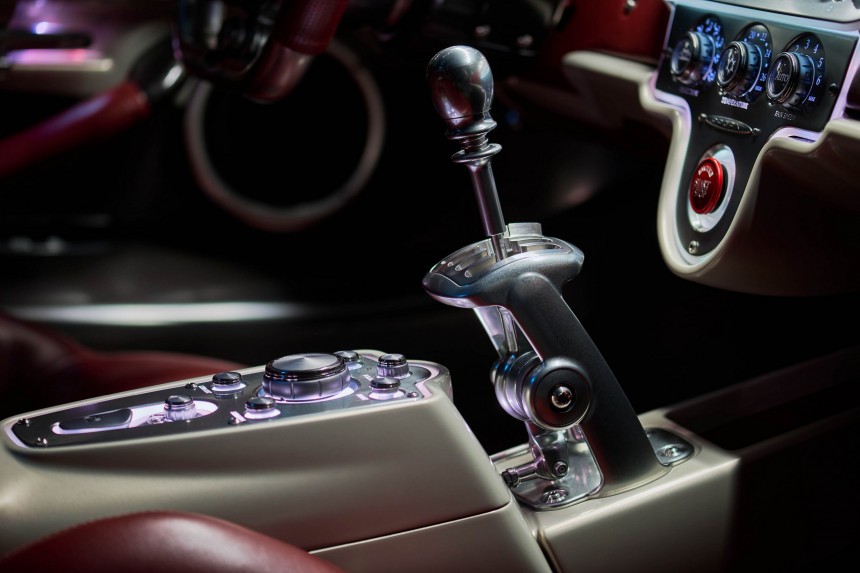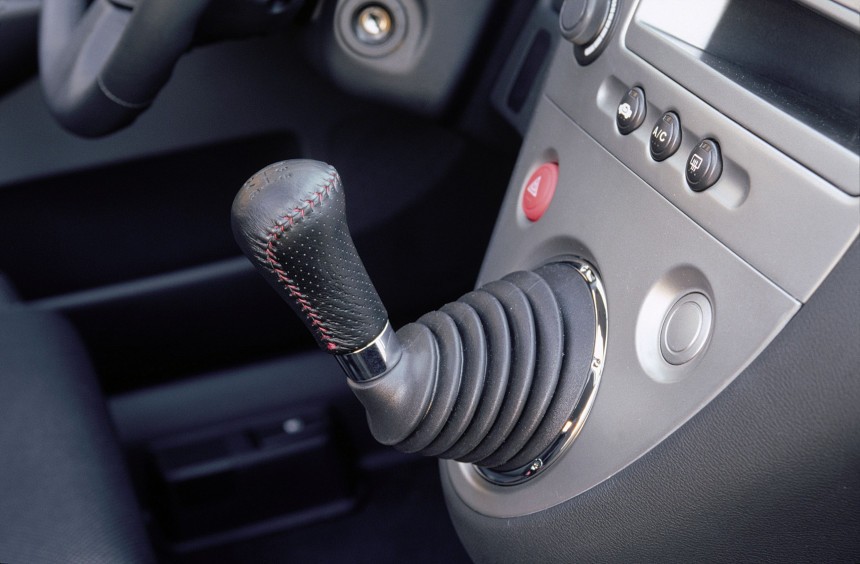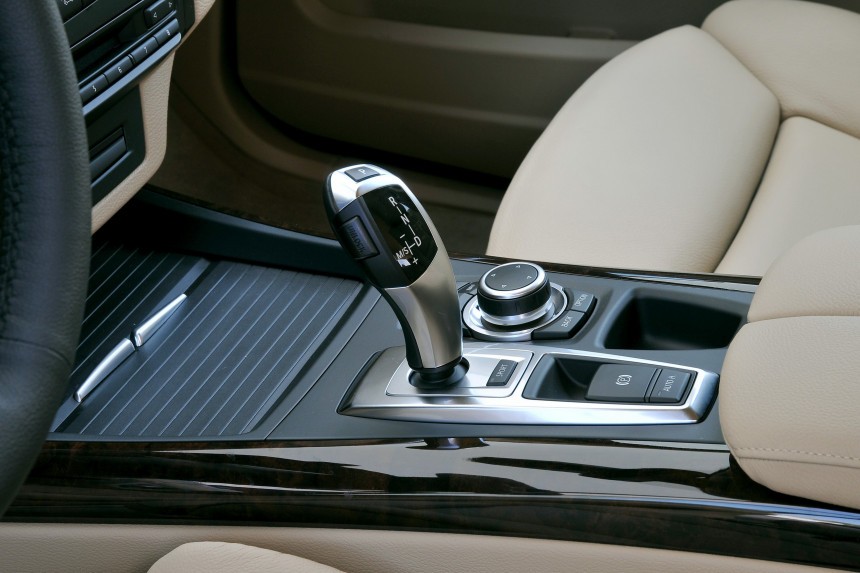The concept of the gearshift has changed a lot in the last hundred or so years. Over that time, especially more recently, we’ve started to experiment with how we change gears. Along the way, there have been some oddballs. Some have informed the way the rest of the industry does things, despite their initially poor reception. Some are so wild they look like they belong in a Geiger painting. All have one thing in common: they’re weird as hell.
Volkswagen’s weird dash-mounted shifter
We’ll start with something fairly current. The Volkswagen ID.4 gets a load of crap from lots of people. Despite that, the car has proven popular. These things don’t get in the way of some wonky interior design choices, from missing climate controls to this wild shifter arrangement.
Volkswagen, perhaps taking inspiration from Nissan sports cars of the 90s, mounted the controls near the gauge cluster. In this case, the drive selector is mounted to the car’s screen. Users operate the trapezoidal dial by twisting it to any of its three positions. Obviously, the quirk lies in the placement, not the operation.
Still, it’s an odd place for the drive selector to be. It’s not close to the wheel, like Mercedes’ turn signal-style shifter, so you can’t hit it with your fingertips. Instead, you have to reach up for it. VW still deserves some credit for trying something new without overcomplicating things.
Complication is where the Lamborghini Urus’ shifter thrives. It’s a massive cluster of selectors for various functions placed in an admittedly very traditional location: just below the center stack. On the left, users can select from four predefined drive modes: Strada, Sport, Corsa, and Rally. On the other side of these is the Ego drive mode, one you can personalize to your liking.
Under the Ego switch are shortcuts to menus for the car’s chassis, steering, and suspension settings. In the middle, there is a trio of buttons, as well as lights to show which gear you’re in. The left button is for Park, and the right is to put the car in Manual, allowing users to shift themselves.
But the weirdness lies at the center, with the nuclear-launch-button starter switch. Interestingly enough, if you can’t be bothered with the theater of yelling “FOX 2 FOX 2!!” and violently flipping open the switch cover while starting the car, you can simply poke a finger through the hole in the cover. Weird, sure, but the whole arrangement can only be made by Lamborghini.
This is the car that kicked off the list, actually. Pagani has long been known for its rather eccentric shifter arrangements, whether manual or automatic. The brand’s latest V12 creation, the Utopia, goes the extra mile. Not only is the six-speed shifter gated, but the gate also rises up out of the car’s center stack, as if to offer the gear lever to your hand.
It's not fair to call the beautiful exposed shifter linkage “typical,” as it’s certainly an oddity among cars, but Pagani has been doing this for some time. In fact, Horatio’s cars may be some of the first exotics to showcase the shifter in such a way.
Other brands have taken notice. Koenigsegg, when it does do a manual transmission, often leaves some aspect of the linkage visible. The now-defunct Spyker had an interesting exposed manual shifter in its C8. More “mainstream” sportscar brands have tried this as well. Lotus’ new Emira has one, though a see-through metal wire enclosure makes it far less obvious than in Pagani’s cars.
We’ll keep on the manuals for now. The Civic Si is certainly one of the more pedestrian cars on this list, up there with the ID.4 and the forthcoming BMW down the page. Still, its six-speed manual is weird for a number of reasons. For starters, the shifter is mounted on the dash, a la Toyota Prius. That’s down to the fact these cars didn’t really have a traditional center console. The car’s FWD powertrain also means the linkages can be shorter, thus saving Honda money on parts.
Of course, the result is a very strange-looking manual transmission. The gear lever is placed at a 45-degree angle compared to the input shaft, which angles the shifter towards the driver’s hand. On top of that, the shifter boot isn’t traditional leather. Instead, Honda opted for a rubber boot.
Stylistically, this choice is nearly as strange as the shifter itself. The car was designed in the closing years of the ‘90s and was on sale until 2005. But rubber shifter boots had long since gone out of style. They were popular in the late ‘70s and early ‘80s, but quickly fell out of fashion in the 90s. Porsche made extensive use of them in classic 911s, for example. Still, if this kind of weird is up your alley, EP3 Civic Si’s are very cheap cars, supposing you can find one, and they all came with the manual.
This final shifter has arguably had the greatest effect on the auto industry to date. BMW introduced this particular style of shift-by-wire level for the E70 generation X5, which debuted in July 2006. It was a massive departure from the norm in Munich, and the new shifter had no physical connection to the transmission. Instead, it was all buttons and wires. Damn nearly every new car on sale today features the same arrangement, though you could argue the Toyota Prius was truly the first. Let’s say the Prius walked so the E70 X5 shifter could run.
Operation is a little strange and something BMW still uses today. An unlock button is held while the shifter is maneuvered. Users push the joystick-like lever up for Reverse, down for Drive, and down and left for Sport/Manual mode. Park is located on the crown of the joystick. Over the years, BMW has changed where these different selections fall on the shifter, but the concept remains the same.
Other brands have begun to employ a similar shift-by-wire design in their models. Mercedes, Audi, Porsche, and Volkswagen all do it. As a matter of fact, if you were to pick a new car out of the air, it would likely have some kind of shift-by-wire that was popularized by Bangle-era BMWs.
While a lot of shifters on this list have just been weird for the sake of weird, this one took strange and brought it to mainstream. I don’t know if that’s impressive or something deserving of criticism, but it has certainly changed how we interact with our cars.
We’ll start with something fairly current. The Volkswagen ID.4 gets a load of crap from lots of people. Despite that, the car has proven popular. These things don’t get in the way of some wonky interior design choices, from missing climate controls to this wild shifter arrangement.
Still, it’s an odd place for the drive selector to be. It’s not close to the wheel, like Mercedes’ turn signal-style shifter, so you can’t hit it with your fingertips. Instead, you have to reach up for it. VW still deserves some credit for trying something new without overcomplicating things.
The Lamborghini Urus’ intimidating shifter array
Under the Ego switch are shortcuts to menus for the car’s chassis, steering, and suspension settings. In the middle, there is a trio of buttons, as well as lights to show which gear you’re in. The left button is for Park, and the right is to put the car in Manual, allowing users to shift themselves.
But the weirdness lies at the center, with the nuclear-launch-button starter switch. Interestingly enough, if you can’t be bothered with the theater of yelling “FOX 2 FOX 2!!” and violently flipping open the switch cover while starting the car, you can simply poke a finger through the hole in the cover. Weird, sure, but the whole arrangement can only be made by Lamborghini.
The Pagani Utopia’s wild gated manual
It's not fair to call the beautiful exposed shifter linkage “typical,” as it’s certainly an oddity among cars, but Pagani has been doing this for some time. In fact, Horatio’s cars may be some of the first exotics to showcase the shifter in such a way.
Other brands have taken notice. Koenigsegg, when it does do a manual transmission, often leaves some aspect of the linkage visible. The now-defunct Spyker had an interesting exposed manual shifter in its C8. More “mainstream” sportscar brands have tried this as well. Lotus’ new Emira has one, though a see-through metal wire enclosure makes it far less obvious than in Pagani’s cars.
The Honda Civic Si (EP3) console-mounted manual
Of course, the result is a very strange-looking manual transmission. The gear lever is placed at a 45-degree angle compared to the input shaft, which angles the shifter towards the driver’s hand. On top of that, the shifter boot isn’t traditional leather. Instead, Honda opted for a rubber boot.
Stylistically, this choice is nearly as strange as the shifter itself. The car was designed in the closing years of the ‘90s and was on sale until 2005. But rubber shifter boots had long since gone out of style. They were popular in the late ‘70s and early ‘80s, but quickly fell out of fashion in the 90s. Porsche made extensive use of them in classic 911s, for example. Still, if this kind of weird is up your alley, EP3 Civic Si’s are very cheap cars, supposing you can find one, and they all came with the manual.
The BMW X5 (E70) joystick shifter
Operation is a little strange and something BMW still uses today. An unlock button is held while the shifter is maneuvered. Users push the joystick-like lever up for Reverse, down for Drive, and down and left for Sport/Manual mode. Park is located on the crown of the joystick. Over the years, BMW has changed where these different selections fall on the shifter, but the concept remains the same.
Other brands have begun to employ a similar shift-by-wire design in their models. Mercedes, Audi, Porsche, and Volkswagen all do it. As a matter of fact, if you were to pick a new car out of the air, it would likely have some kind of shift-by-wire that was popularized by Bangle-era BMWs.
While a lot of shifters on this list have just been weird for the sake of weird, this one took strange and brought it to mainstream. I don’t know if that’s impressive or something deserving of criticism, but it has certainly changed how we interact with our cars.
